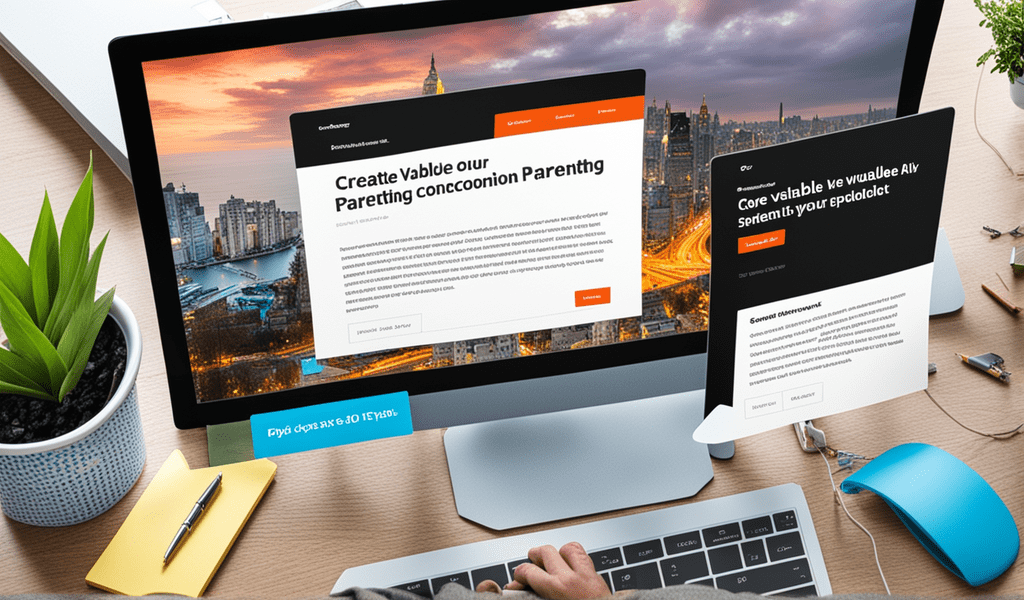
The best SEO for Parenting Blogs Connecting with Moms and Dads 2023
Introduction
For parenting blogs, Search Engine Optimization (SEO) is a vital strategy to connect with moms and dads online and establish a trusted resource for parenting advice With parents increasingly relying on search engines for parenting tips and guidance, optimizing for SEO can significantly enhance the visibility of your blog and attract more engaged readers In this article, we will explore the significance of SEO for parenting blogs and effective strategies to connect with moms and dads online
1 Identify Your Target Audience and Parenting Niche
Identify your target audience, whether it’s new parents, single parents, or parents of specific age groups Conduct keyword research to understand popular parenting topics and queries

2 Optimize Blog Content with Parenting Keywords
Optimize your parenting blog content by incorporating parenting-related keywords naturally into your articles, tips, and advice Use relevant keywords in s, headers, and meta descriptions
Research Relevant Keywords:
Conduct thorough keyword research to identify parenting keywords that align with your blog’s niche. Consider using tools like Google Keyword Planner or SEMrush to discover high-impact keywords.
Understand Your Audience:
Tailor your content to address the specific needs and concerns of your target audience. Understanding the challenges and interests of parents allows you to create content that resonates and provides genuine value.
Natural Keyword Integration:
Integrate parenting keywords naturally within your content. Avoid keyword stuffing, and focus on seamless incorporation to maintain readability and user engagement.
Create Compelling Headlines:
Craft compelling headlines that incorporate parenting keywords. A well-optimized headline not only attracts readers but also improves your blog’s search engine visibility.
Address Diverse Parenting Topics:
Cover a variety of parenting topics in your blog to cater to a diverse audience. This could include articles on pregnancy, child development, parenting tips, education, and family activities.
Use Long-Tail Keywords:
Incorporate long-tail keywords related to specific parenting queries. Long-tail keywords often capture more targeted search intent, making your content more relevant to users’ specific needs.
Provide Practical Advice:
Offer practical advice and solutions to common parenting challenges. Share personal experiences, expert insights, and evidence-based information to establish credibility.
Share Personal Stories:
Connect with your audience by sharing personal stories and anecdotes related to parenting. Authentic storytelling fosters a sense of relatability and strengthens the connection with your readers.
Include Child Development Milestones:
Create content that discusses child development milestones, age-appropriate activities, and parenting techniques tailored to different stages of a child’s life.
Engage in Conversations:
Encourage engagement by inviting readers to share their thoughts, experiences, and tips in the comments section. Respond to comments promptly to foster a sense of community on your blog.
Utilize Visual Content:
Enhance your parenting content with visually appealing elements such as images, infographics, and videos. Visual content not only captures attention but also complements your written information.
Optimize Meta Descriptions:
Optimize meta descriptions with parenting keywords to improve your blog’s click-through rate from search engine results. Craft compelling meta descriptions that provide a concise overview of your content.
Social Media Promotion:
Share your parenting blog content on social media platforms to increase visibility. Tailor your social media posts to include relevant parenting keywords and encourage sharing among your audience.
Collaborate with Parenting Experts:
Collaborate with parenting experts, psychologists, or child development specialists for guest posts or joint projects. This adds credibility to your content and exposes your blog to new audiences.
Address Common Parenting Concerns:
Identify and address common parenting concerns in your content. Offering solutions to frequently asked questions demonstrates your expertise and provides valuable information to your readers.
Regularly Update Content:
Keep your parenting content up-to-date with the latest research, trends, and parenting advice. Regularly updating your content signals to search engines that your blog is a reliable source of current information.
3 Create Valuable and Informative Parenting Content
Create valuable and informative parenting content, including practical tips, expert advice, and personal stories Valuable content can build trust and credibility with moms and dads

4 Utilize Long-Tail Keywords
Incorporate long-tail keywords into your content to target specific parenting queries and cater to niche parenting interests
Understanding Long-Tail Keywords:
Long-tail keywords are specific, detailed phrases that typically consist of three or more words. Unlike generic keywords, long-tail keywords are more precise, catering to a niche audience and reflecting specific user intent.
Comprehensive Keyword Research:
Begin by conducting thorough keyword research to identify relevant long-tail keywords in your niche. Utilize tools like Google Keyword Planner, SEMrush, or Ahrefs to discover potential long-tail variations.
Addressing User Intent:
Craft content that directly addresses the specific needs, questions, or concerns your target audience might have. Long-tail keywords often capture more nuanced user intent, providing valuable solutions or information.
Natural Integration:
Integrate long-tail keywords seamlessly within your content. Ensure that they flow naturally within the context of the information you’re providing. Avoid keyword stuffing, as it can negatively impact user experience and SEO.
Creating Comprehensive Content:
Develop high-quality, comprehensive content that thoroughly covers the topic related to the long-tail keyword. Answer potential questions, provide valuable insights, and offer solutions to meet the specific needs of your audience.
Inclusion in Headings and Subheadings:
Incorporate long-tail keywords into your headings and subheadings to make your content more structured and SEO-friendly. This not only aids in readability but also signals the relevance of your content to search engines.
Optimize Meta Tags:
Optimize meta titles and descriptions with long-tail keywords. Craft compelling meta tags that accurately represent the content on each page, encouraging click-throughs from search engine results.
Internal Linking:
Implement a strategic internal linking structure, connecting relevant pages within your website. This helps both users and search engines navigate your content effectively, enhancing the overall user experience.
Mobile Optimization:
Ensure your website is optimized for mobile devices. Google prioritizes mobile-friendly websites, making mobile optimization crucial for improved search rankings.
Regular Updates:
Keep your content up-to-date with the latest trends and information in your niche. Regularly refresh and republish existing content to signal to search engines that your site is active and relevant.
User-Friendly Experience:
Enhance the overall user experience of your website. A user-friendly design, easy navigation, and clear calls to action contribute to higher engagement and improved search engine performance.
Social Media Integration:
Share content optimized with long-tail keywords on social media platforms to increase visibility and drive traffic to your website. Use relevant hashtags and engage with your audience on these platforms.
Analytics and Monitoring:
Use analytics tools to monitor the performance of your long-tail keywords. Analyze user behavior, track trends, and adjust your content strategy based on insights gained from these tools.
Local SEO Considerations:
If your business serves a specific location, incorporate local long-tail keywords to target regional audiences. This is particularly beneficial for businesses with location-specific services.
Voice Search Optimization:
Given the rise of voice search, consider optimizing your content for how people naturally speak. Voice searches often involve longer, more conversational phrases, aligning with the characteristics of long-tail keywords.
5 Implement Parenting Schema Markup
Implement parenting schema markup on your blog to provide additional context to search engines about your parenting content This can lead to enhanced search results and more clicks

6 Leverage Social Media for Parenting Promotion
Leverage social media platforms to promote your parenting content, engage with parents, and share relatable stories Social media exposure can lead to increased website traffic and a loyal following

7 Encourage Parent Interaction and Feedback
Encourage parent interaction through comments, surveys, and polls Actively listen to your audience’s feedback to create content that resonates with moms and dads
Open Communication Channels:
- Establish open and accessible communication channels between parents and your organization. This could include email, dedicated discussion forums, or social media groups.
2. Regularly Seek Feedback:
- Actively seek feedback from parents on a regular basis. This could be through surveys, feedback forms, or informal discussions. Regular check-ins demonstrate your commitment to continuous improvement.
3. Anonymous Feedback Options:
- Provide options for anonymous feedback to ensure parents feel comfortable expressing their opinions candidly. This can be particularly useful when addressing sensitive topics or concerns.
4. Create Parent Advisory Committees:
- Form parent advisory committees or focus groups where a diverse group of parents can provide insights and suggestions. This collaborative approach fosters a sense of community and involvement.https://scholarshipcorners.com/
5. Hold Town Hall Meetings:
- Host regular town hall meetings or virtual forums where parents can voice their opinions, ask questions, and engage in discussions. This direct interaction helps build transparency and trust.
6. Feedback Surveys:
- Design feedback surveys that cover a range of topics, from overall satisfaction to specific aspects of your services. Keep surveys concise and focused to encourage higher participation.
7. Encourage Positive Stories:
- Invite parents to share positive stories and experiences. This not only boosts morale but also provides authentic testimonials that can be shared with the wider community.
8. Respond Promptly:
- Respond promptly to parent inquiries, feedback, or concerns. Timely responses demonstrate your commitment to addressing parent needs and concerns in a proactive manner.
9. Host Parent Workshops or Webinars:
- Organize workshops or webinars on relevant topics where parents can participate and share their experiences. This interactive approach fosters a sense of community and shared learning.
10. Utilize Social Media:
- Leverage social media platforms to engage with parents. Pose questions, share relevant content, and actively respond to comments and messages. Social media provides a more informal space for interaction.
11. Parent-Teacher Conferences:
- Arrange regular parent-teacher conferences to discuss individual student progress and address any concerns. These one-on-one interactions provide personalized feedback.
12. Implement Suggestion Boxes:
- Place suggestion boxes in physical locations or create virtual suggestion boxes where parents can submit feedback anonymously. This provides an additional outlet for those who may prefer written feedback.
13. Recognition and Appreciation:
- Acknowledge and appreciate parent contributions and feedback. Recognizing their input reinforces the value you place on their perspectives and strengthens the parent-organization partnership.
14. Share Changes Made Based on Feedback:
- Communicate the changes or improvements made based on parent feedback. This shows that their input is not only valued but also has a tangible impact on the organization.
15. Celebrate Success Stories:
- Showcase success stories resulting from parent collaboration. Whether it’s academic achievements, community initiatives, or improvements in services, celebrating successes fosters a positive atmosphere.
16. Collaborate on Events and Initiatives:
- Collaborate with parents on organizing events or initiatives. Involving them in the planning process builds a sense of ownership and community spirit.
17. Provide Resources for Parental Involvement:
- Offer resources that encourage parental involvement, such as guides, webinars, or articles on effective ways to support their child’s education or well-being.
18. Celebrate Parental Involvement Month:
- Designate a month to celebrate parental involvement. During this time, highlight the importance of parent engagement and recognize the efforts of parents within the community.
19. Create a Parent Portal:
- Establish a dedicated online portal where parents can access resources, engage in discussions, and provide feedback. A centralized platform enhances communication and collaboration.
20. Maintain Privacy and Data Security:
- Emphasize the importance of privacy and data security when collecting feedback. Assure parents that their information is handled with confidentiality and in compliance with relevant regulations.
8 Utilize Video Content for Parenting Tips
Utilize video content to share parenting tips, conduct Q&A sessions, and offer product reviews Video content can be engaging and improve search rankings
9 Collaborate with Parenting Influencers
Collaborate with parenting influencers and guest bloggers to expand your reach within the parenting community Influencer endorsements can increase your blog’s credibility
. Identify Relevant Influencers:
- Begin by identifying influencers in the parenting niche whose values align with your brand or organization. Look for influencers with a genuine following and content that resonates with your target audience.
2. Research and Vet Influencers:
- Thoroughly research and vet potential influencers. Examine their engagement rates, audience demographics, and the authenticity of their content. Ensure that their style and messaging align with your brand ethos.
3. Establish Clear Objectives:
- Define clear objectives for the collaboration. Whether it’s increasing brand awareness, promoting specific parenting products or services, or reaching a new audience, having well-defined goals is crucial.
4. Authentic Outreach:
- Reach out to influencers with authenticity and personalization. Clearly communicate why you believe a collaboration would be mutually beneficial and how it aligns with their audience’s interests.
5. Highlight Mutual Benefits:
- Emphasize the benefits of the collaboration for both parties. This could include exposure to a new audience, access to exclusive content or events, or the opportunity to be part of a meaningful parenting campaign.
6. Provide Value to Influencers:
- Offer influencers valuable content, resources, or experiences that align with their expertise and provide genuine value to their audience. The more value you provide, the more likely influencers will be interested in collaborating with you.
7. Negotiate Fair Terms:
- Establish clear terms of collaboration, including compensation, deliverables, and timelines. Ensure that the terms are fair and mutually agreed upon to build a positive and lasting relationship with influencers.
8. Co-Create Content:
- Collaborate on the creation of authentic and engaging content. This could include blog posts, social media campaigns, videos, or joint events. Leverage the influencer’s unique style and voice to create content that resonates.
9. Leverage Social Media Platforms:
- Utilize the influencer’s social media platforms to amplify your brand message. Encourage them to create content that showcases your parenting products or services, reaching their followers effectively.
10. Engage in Interactive Campaigns:
- Plan and execute interactive campaigns that involve the influencer’s audience. This could include giveaways, contests, or Q&A sessions, fostering engagement and participation.
11. Host Influencer Events:
- Organize events or webinars where influencers can share their expertise and engage with their audience. This could be a panel discussion, a live interview, or a collaborative workshop.
12. Feature Influencers in Your Content:
- Feature influencers in your blog posts, newsletters, or other content formats. Highlighting their insights and experiences not only adds credibility to your content but also strengthens your relationship with them.
13. Utilize Influencers in Product Launches:
- Involve influencers in the launch of new parenting products or services. Their endorsement and authentic reviews can significantly impact your product’s reception in the parenting community.
14. Encourage Influencers to Share Personal Stories:
- Encourage influencers to share personal parenting stories or experiences related to your brand. Authentic storytelling creates a connection with their audience and enhances the relatability of your products or services.
15. Monitor and Measure Performance:
- Regularly monitor the performance of the collaboration using analytics tools. Track metrics such as reach, engagement, and conversion rates to assess the impact of the partnership.
16. Express Gratitude:
- Show appreciation for the collaboration by expressing gratitude to influencers. Recognize their contribution and the value they bring to your brand, fostering a positive and collaborative atmosphere.
17. Build Long-Term Relationships:
- Look beyond a one-time collaboration. Building long-term relationships with parenting influencers can lead to ongoing advocacy for your brand, providing sustained visibility in the parenting community.
18. Stay Compliant with Regulations:
- Ensure that influencer partnerships comply with relevant regulations and guidelines, such as disclosure requirements for sponsored content. Transparency is essential for maintaining trust with the audience.
19. Encourage Parental Interaction:
- Encourage influencers to engage with their audience regarding the collaboration. Responding to comments and inquiries helps foster a sense of community and allows for a more interactive experience.
20. Collaborate on Educational Initiatives:
- Collaborate with parenting influencers on educational initiatives. This could include joint webinars, online courses, or informative content that benefits their audience and aligns with your brand values.
10 Monitor Performance and Adapt
Regularly monitor your parenting blog’s SEO performance through analytics tools Analyze website traffic, engagement metrics, and keyword rankings to refine your SEO strategies and better connect with moms and dads
Conclusion
Mastering SEO is essential for food trucks to boost search visibility, engage customers, and thrive in the mobile dining scene. Identify your audience, optimize with keywords, and create compelling content. Use long-tail keywords, implement local SEO, and leverage social media. Collaborate with influencers, share video experiences, and showcase customer testimonials. Monitor and adapt your SEO for ongoing success. Elevate your online presence, attract foodies, and become a sought-after destination.